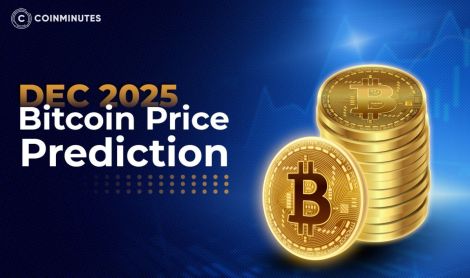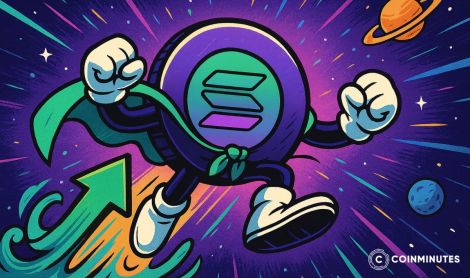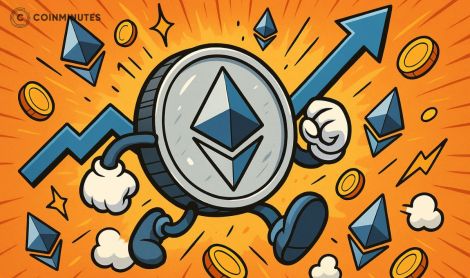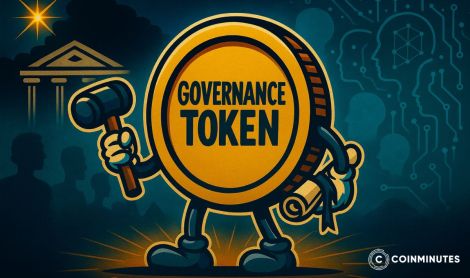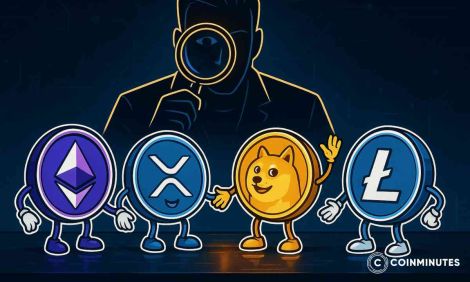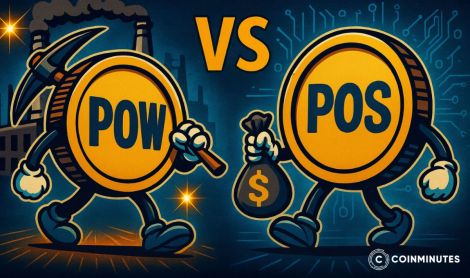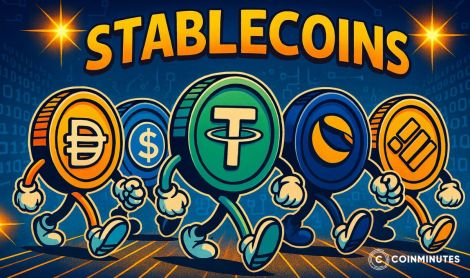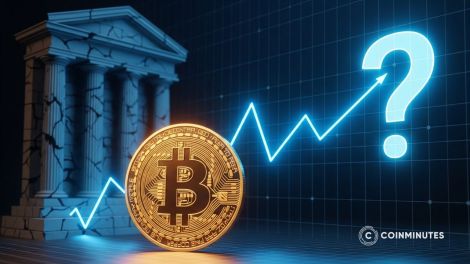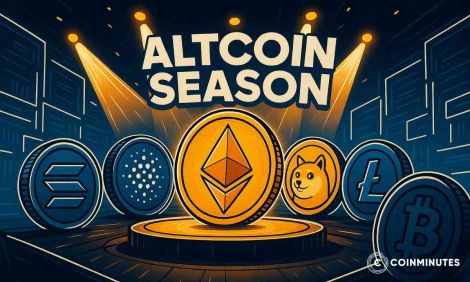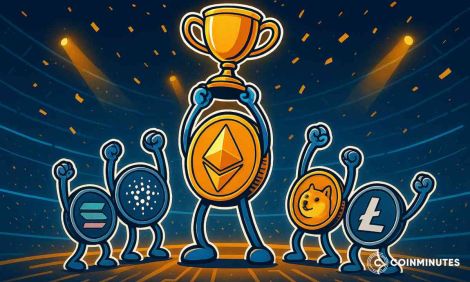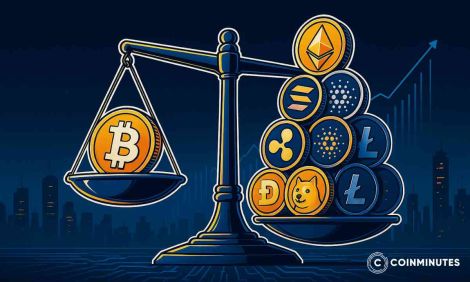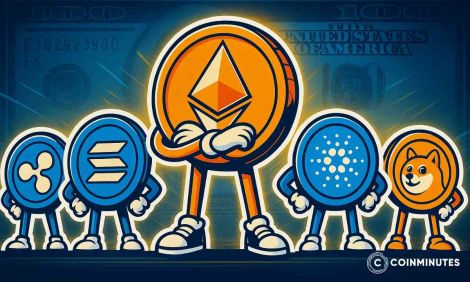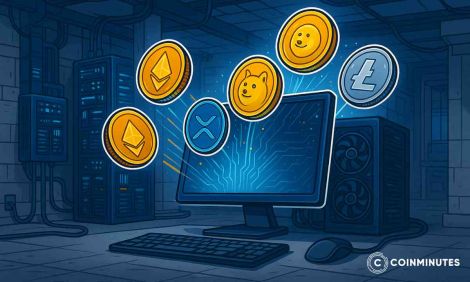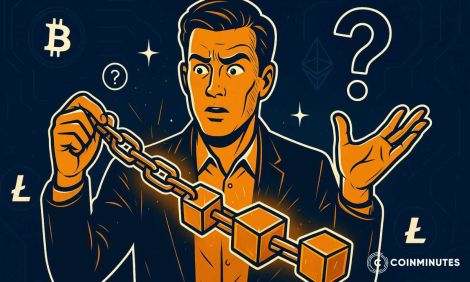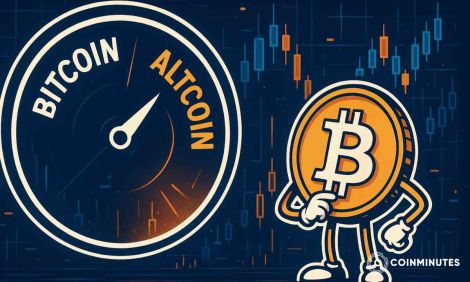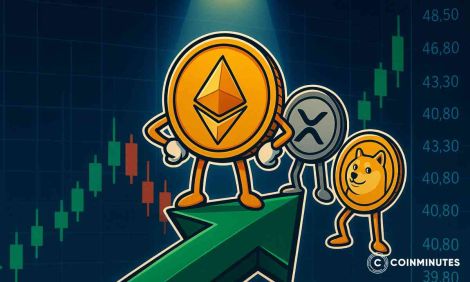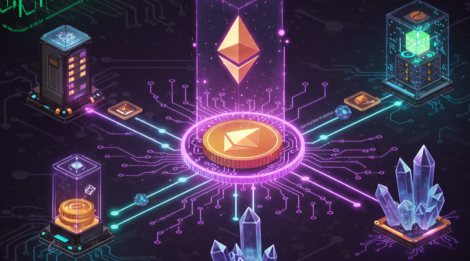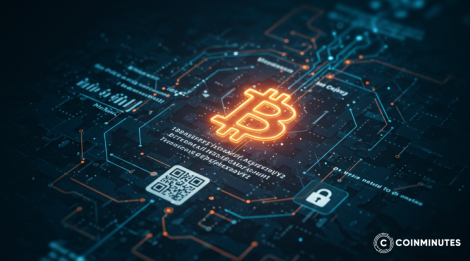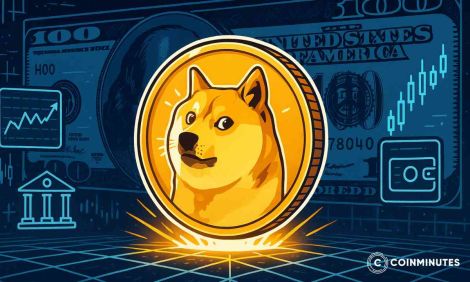Token Types Explained: The Ultimate Crypto Guide for 2025
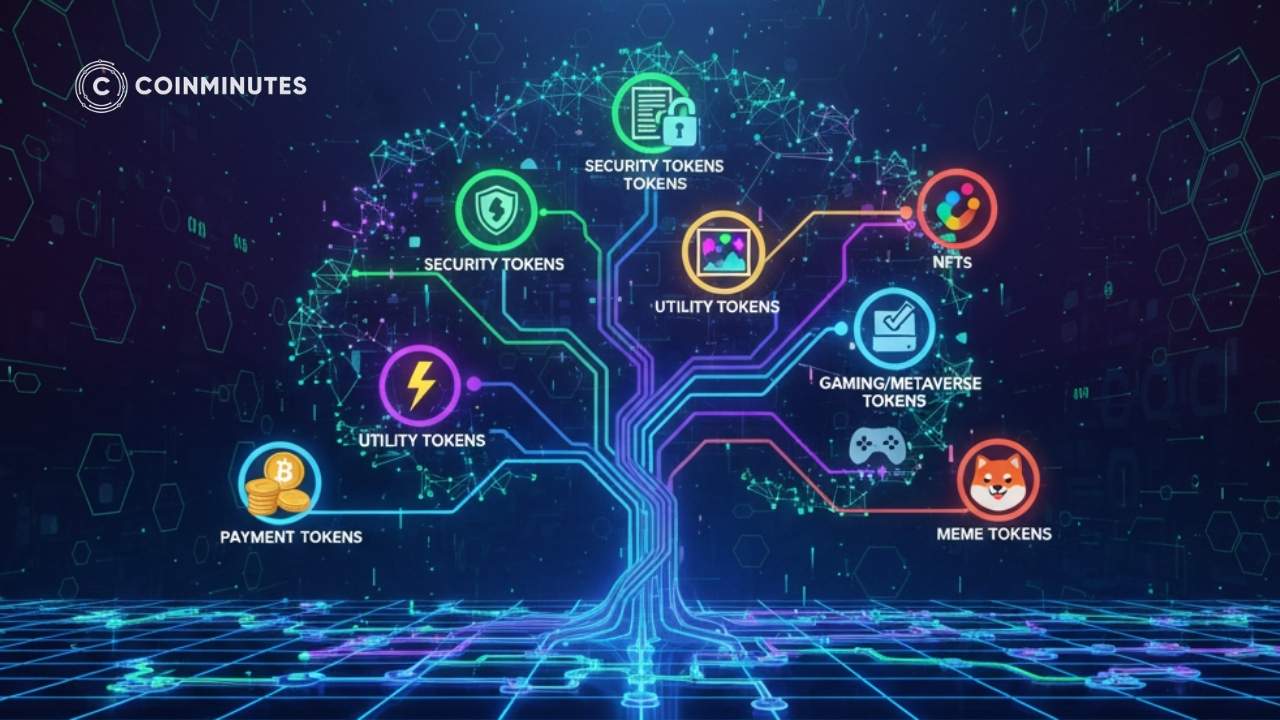
With over 25,000 cryptocurrency tokens floating around now - up from just a few hundred back in 2020 - getting your head around all these different crypto tokens isn't exactly easy. That's why we at CoinMinutes decided to put together this no-BS guide to help you navigate the token jungle.
Crypto Tokens Classification and Why You Should Care
Let's first break down what makes each token tick and why you should give a d*mn.
Crypto Tokens 101
I got into crypto back in 2018 and man, nobody could explain the difference between coins and tokens in a way that made sense. Took me forever to get it. Here's the deal: Bitcoin, Ethereum... those are coins with their own blockchains. Tokens? They're just hitchhikers built on top of someone else's blockchain.
It's kinda like... Bitcoin is iOS and Apple's apps, while tokens are all those third-party apps you download. Each token does its own thing - voting rights, digital art, whatever.
And yeah, you can tokenize pretty much anything valuable these days. Real estate? Sure. Your identity? Why not. I've even seen tokenized wine collections, which is... exactly the kind of weird crap you'd expect from this industry.
How Token Standards Evolved
So this token stuff didn't just appear out of nowhere. Bitcoin drops in 2009, but honestly not much happened until Ethereum showed up in 2015 with smart contracts. That changed everything.
Then 2017 hits and suddenly ERC-20 is a thing - basically a recipe for how tokens should work - and boom, ICO madness everywhere. Later they figured out NFTs needed their own standard (ERC-721), and then someone got clever and mashed everything together with ERC-1155.
Meanwhile, every other blockchain's copying homework: Binance's like "we'll call ours BEP-20," TRON's doing TRC-20, Solana's got SPL tokens. Not exactly original naming, but whatever works I guess. Afterall, each new version pushed what we can do with blockchain a bit further.
Why Token Types Matter If You're Investing
"I put money in a token that turned out to be a security without realizing it, and spent months sorting out the tax nightmare," a client told me once - happens to crypto newbies all the time.
Look, each token type comes with its own special flavor of headache. Utility tokens? They might explode in value when their platform gets hot, or crash into oblivion when the project tanks. Security tokens have to deal with all those boring regulations. And stablecoins... well, they're supposed to be "stable" but achieve that through methods ranging from "pretty solid" to "total disaster waiting to happen."
Miss these differences and you're screwed - either the SEC comes knocking, you completely misjudge a token's actual worth, or you miss red flags that would've saved your investment. Let me break down the main types so you don't step in the same piles of... trouble... that I did.
Financial and Payment Tokens
Cash, money, dough - whatever you call it, these tokens are all about value. Some want to be the new dollar, others just want to hold steady, and a few are trying to tokenize everything from buildings to businesses.
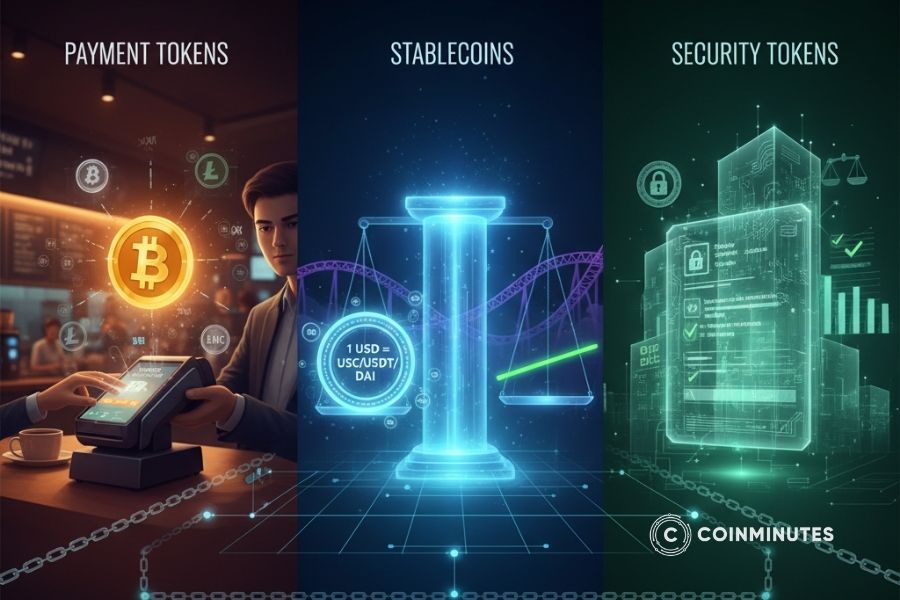
The building blocks of financial tokens
Payment Tokens - The OG Cryptocurrency Use Case
Bitcoin started this category back in 2009, described in Satoshi's whitepaper as "peer-to-peer electronic cash." Other examples include Litecoin (faster transactions), Bitcoin Cash (cheaper fees), and Monero (for the privacy folks).
This is what Bitcoin was supposed to be before the "digital gold" narrative took over - just plain ol' electronic cash. Unlike the specialized tokens that only work in their little walled gardens, payment tokens want to be everywhere. Buy coffee, pay rent, whatever.
Perfect payment token would be fast, cheap, private, widely accepted, and stable... but none of them nail all five. Even with big names like Microsoft and Starbucks accepting crypto these days, the crazy price roller coaster keeps normal people from actually using this stuff to buy their daily latte.
Stablecoins - Fixing the Rollercoaster Problem
Last year, I watched my buddy send $50,000 overseas using stablecoins to snag a beach house in Thailand. The whole thing went through in minutes and cost less than a buck. Regular banking would've taken forever and cost an arm and a leg. That right there shows you why stablecoins are expected to hit $150 billion+ by the end of 2025.
Stablecoins tackle crypto's biggest problem - those wild price swings - by keeping a steady value, usually tied to regular money like the US dollar. They're basically crypto's handshake with the traditional money world.
There are three main flavors:
Fiat-backed stablecoins
Backed 1:1 by regular money in reserve. Think USDT (Tether), USDC (Circle), and BUSD (Binance USD). Simple enough, but you gotta trust that they actually have the cash they claim.
Crypto-backed stablecoins
Backed by other cryptocurrencies with extra collateral to handle price swings. DAI is the big one here, usually keeping 150% collateral. More decentralized but can get messy during market crashes.
Algorithmic stablecoins
Keep their peg through supply and demand balancing acts rather than actual collateral. They promise bigger scale but have a spotty history - TerraUSD's 2022 collapse is a prime example. I personally lost about 15k in that mess because I didn't understand how the stabilizing tricks worked - expensive lesson in doing my homework!
Security Tokens - Digital Ownership Slips
Security tokens are basically the boring cousin at the crypto family reunion - they represent actual ownership in real stuff. Company shares, real estate, investment funds... just with blockchain sprinkled on top.
Where traditional finance and crypto hook up, you get these tokens - fractional ownership, 24/7 trading, automated compliance, faster settlements. But - and this is a big but - they still gotta follow securities laws. No way around that one.
Some real examples in the wild:
-
RealT: Turns rental properties into tokens, so you can buy a piece for as little as $50
-
tZERO: Offers tokens representing company shares with automatic dividend payouts
-
Polymath: Builds tools for creating security tokens that won't get you in trouble with regulators
Platform and Infrastructure Tokens
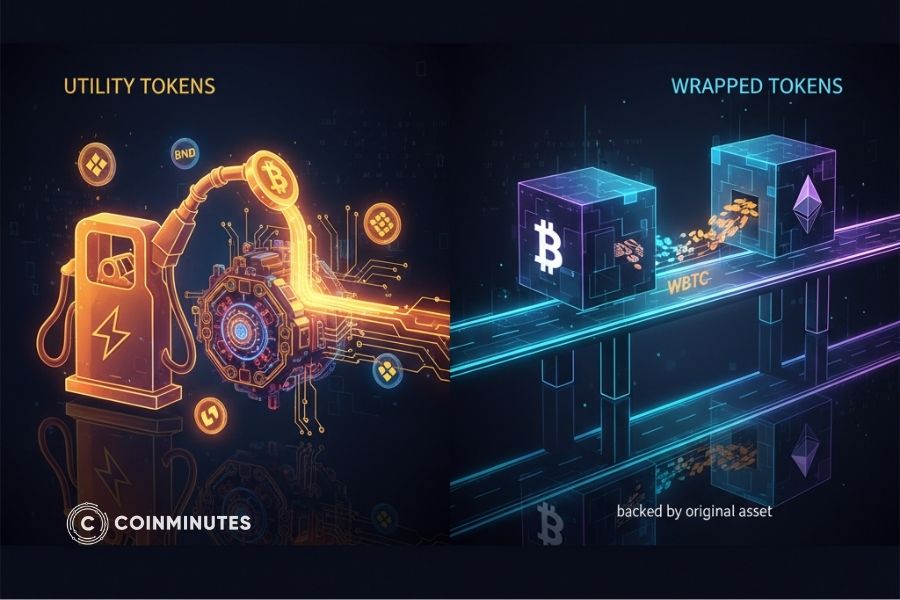
Fueling apps and bridging blockchains
Think of these as the digital oil that keeps the blockchain engines running. They're not designed to be money but rather to power specific platforms and connect different blockchain worlds.
Utility Tokens - The Fuel for Blockchain Apps
These aren't money. Not even close. Think of them more like the gasoline that keeps blockchain engines running. They exist to power platforms and connect different blockchain worlds that would otherwise never talk to each other.
The whole point of utility tokens is creating a closed economy within a project. By making users get and spend these tokens, projects can jumpstart network effects and spread value around to participants.
Look at these examples:
-
BNB (Binance): Started as a way to get trading fee discounts on Binance, now powers their whole ecosystem
-
LINK (Chainlink): Pays node operators to feed accurate real-world data into smart contracts
For investors, utility tokens have some perks: they usually go up when more people use the platform, they're less regulated than securities, and many give you voting rights. But there are downsides too: usefulness can be overhyped, competition is brutal, and tech gets outdated fast.
Wrapped Tokens - Building Highways Between Blockchains
WBTC on Ethereum. wETH in DeFi apps. Wrapped BNB on Binance Smart Chain. These are your basic wrapped tokens that changed how different blockchains can work together. If you've dabbled in DeFi, you've probably used wrapped tokens without even knowing it.
Wrapped tokens are basically cryptocurrencies from one blockchain repackaged to work on another, letting stuff like Bitcoin play in Ethereum's DeFi sandbox.
The wrapping process is pretty simple:
-
You lock up the original asset (like BTC) with a custodian
-
That custodian creates an equal amount of wrapped tokens (like WBTC) on the target blockchain
-
Each wrapped token is backed 1:1 by the original
-
You can "unwrap" anytime to get your original stuff back
These tokens fix a basic problem: blockchain isolation. Without them, Bitcoin's trillion-dollar value would be stuck outside the DeFi revolution.
DeFi and Governance Tokens
These tokens give the crypto world its financial plumbing and political systems. Without them, we'd just have digital money with nowhere interesting to use it.
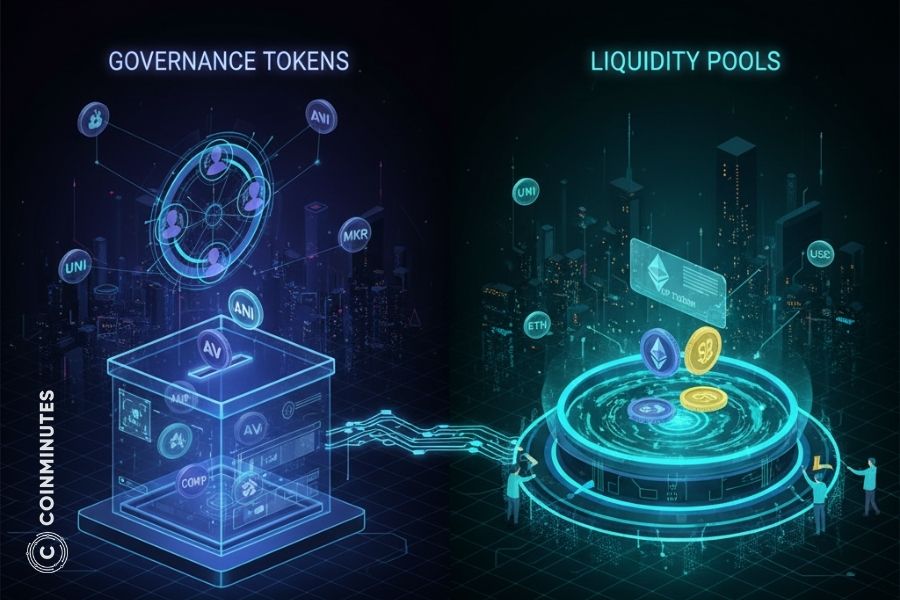
Where governance meets crypto liquidity
Governance Tokens - Voting Rights in Crypto-Land
Governance tokens are basically voting tickets in decentralized protocols - they're the political system of crypto world. They let holders propose and vote on protocol changes, how to spend funds, and big strategic decisions.
These tokens power what we call DAOs - Decentralized Autonomous Organizations - internet-native groups run by members instead of bosses.
Big governance tokens include:
-
MKR (Maker): Controls the knobs and dials for the DAI stablecoin
-
COMP (Compound): Lets you vote on supported assets and interest rates
-
AAVE: Gives governance rights while also serving as insurance against technical problems
-
UNI (Uniswap): Lets holders vote on protocol upgrades and fee structures
I've personally submitted proposals to three different DAOs, and it's been both cool and frustrating. The dream of decentralized governance often crashes into the reality of whale dominance and nobody showing up to vote. In one vote I joined, less than 3% of token holders bothered to vote at all.
Liquidity Provider (LP) Tokens - The Engine of Decentralized Exchanges
LP tokens are receipts showing your stake in a decentralized exchange liquidity pool. When you deposit token pairs (like ETH/USDC) into places like Uniswap or PancakeSwap, you get LP tokens that represent your slice of that pool.
Here's how it works:
-
You dump equal values of two tokens into a liquidity pool
-
The protocol gives you LP tokens showing your contribution
-
As traders use the pool, they generate fees
-
Your LP tokens entitle you to your cut of those fees
These tokens make decentralized exchanges work without traditional order books. They've also spawned yield farming where LP tokens themselves get staked for extra rewards.
But providing liquidity isn't without risks: impermanent loss hits when asset prices drift apart, smart contract bugs could drain your funds, and some projects offer crazy-high returns to suck in liquidity before pulling the rug.
Digital Ownership and Cultural Tokens
This is where crypto gets truly weird. NFTs - the non-fungible tokens that represent one-of-a-kind digital... stuff. Art, virtual real estate, concert tickets, whatever.
Non-Fungible Tokens (NFTs) - One-of-a-Kind Digital Assets
The 2021 NFT explosion was nuts, but now in 2025, things have finally calmed down. Fewer pixelated animals selling for millions, more actual useful applications.
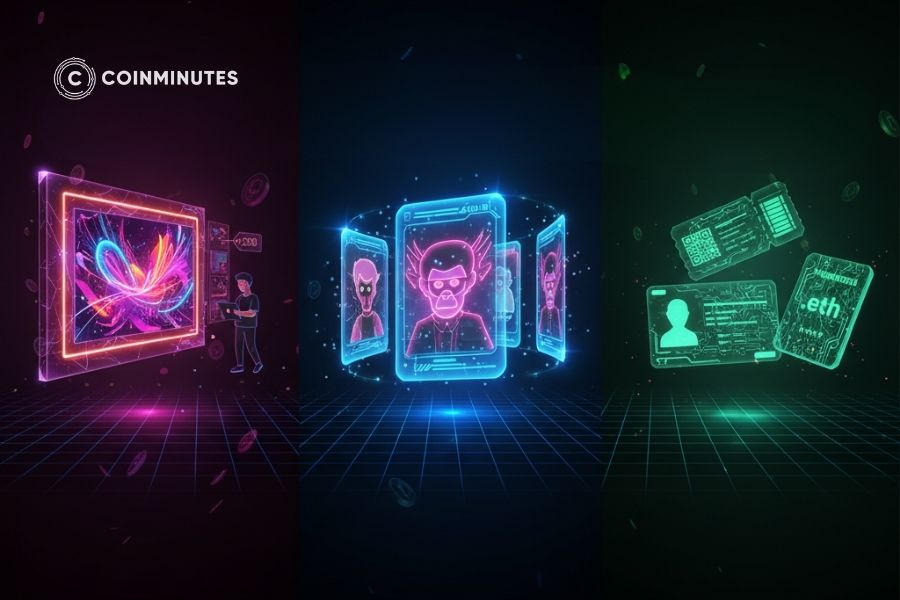
From art to IDs: NFTs find new purpose
Digital Art
They've disrupted a bunch of industries in ways that actually matter. Digital artists now make real money without galleries taking 50% cuts. I bought a piece from some artist in Mexico City last year - only paid $200, which is nothing compared to those Beeple millions you hear about, but that's the point. Artists everywhere can now find buyers directly.
Collectibles
Then there's the whole digital flex thing - CryptoPunks and Bored Apes becoming status symbols for crypto people with too much money.
Identity and Credentials
Growing uses include tamper-proof credentials, event tickets, and domain names. Honestly, this "boring" identity and credential stuff might end up being the biggest deal long-term, even if it's less flashy than the art stuff.
Gaming and Metaverse Tokens - Virtual World Economies
Blockchain and gaming coming together has created new economic setups where players can actually own, trade, and make money from their in-game achievements and items.
Gaming and metaverse tokens do a bunch of jobs in virtual worlds:
-
Currency for buying stuff in-game
-
Voting rights over game development
-
Staking for special features
-
Rewards for player achievements
-
Ownership of digital land and items
Projects include Axie Infinity (AXS), The Sandbox (SAND), and Enjin (ENJ). These tokens have really caught on in developing countries, where play-to-earn games have become actual income sources.
Meme Tokens - Crypto Driven by Communities and Jokes
So these started as literal jokes but somehow became actual money. Go figure. Meme tokens are just crypto riding internet culture waves, but some have hit billion-dollar valuations despite doing basically nothing innovative tech-wise.
Dogecoin kicked this whole category off back in 2013 - just a Bitcoin parody with a Shiba Inu slapped on it. Then came the copycats like SHIB and PEPE because of course they did.
I've never really been into meme tokens and keep them out of my portfolio. Sure, there are occasionally insane returns, but most of these tokens eventually crash to nothing. If you're thinking about jumping in, just treat any meme token money like you would gambling cash, not serious investments.
How to Evaluate Different Token Types
Not all tokens are created equal, and some are straight-up trash fires waiting to happen. Here's how I separate the gems from the garbage when putting my own money on the line.
Key Metrics for Token Analysis
When I size up any cryptocurrency token, I start with tokenomics - the economic rules that determine how value moves through the system. Look at:
Supply stuff tells you how many tokens exist and if that number changes:
-
Total supply: The max number of tokens that will ever exist
-
Circulating supply: Tokens actually out in the market right now
-
Inflation rate: How fast new tokens are being minted
-
Token burning: Ways tokens get permanently destroyed
Different supply setups serve different purposes:
-
Deflationary tokens (like BTC) get scarcer over time but might become too expensive for daily use
-
Inflationary tokens can fund ongoing development but might water down holder value
-
Fixed supply tokens hit a middle ground but can't adapt to changing conditions
Beyond supply, check what drives demand and creates real use:
-
Is the token actually needed to use the platform?
-
Does it capture value from activity through fees or buybacks?
-
Do staking rewards take tokens out of circulation?
The best tokens create natural demand through actual use rather than just hype.
Token Risk Assessment Framework
Each token type comes with its own risks that need checking:
-
Security tokens face heavy regulation but with clearer rules
-
Utility tokens live in a gray area where sudden rule changes could tank values
-
Stablecoins face increasing reserve requirements and potential banking regulations
Market risks affect how easily you can get in and out:
-
Liquidity: Can you sell without tanking the price?
-
Concentration: Are tokens held by a few whales who could manipulate the market?
-
Competition: Are similar projects doing the same thing but better?
Technical risks mean looking under the hood:
-
Code audits: Has anyone legit checked the smart contract for bugs?
-
Central points of failure: Are there admin keys that could compromise everything?
-
Oracle dependencies: Does the project rely on external data feeds that could be manipulated?
Remember that bigger potential gains usually come with bigger risks - nothing's free in crypto.
Future Trends in Token Development
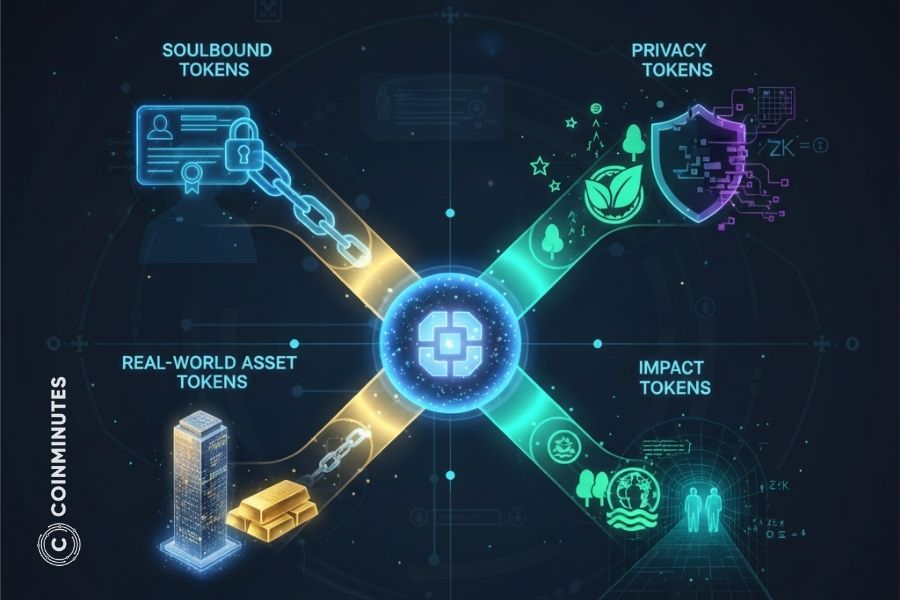
Next-gen tokens shaping crypto’s future
The token landscape never sits still for five minutes. Just when I think I've seen it all, some dev team drops something new that changes everything. We've been tracking these developments closely at CoinMinutes, and a few trends stand out.
Soulbound Tokens are picking up steam - non-transferable identity tokens that basically represent your reputation or credentials. Think of them like digital versions of your college degree that can't be sold or given away.
Real-World Asset tokens are finally getting traction after years of hype. Actually putting real estate, commodities, and other physical stuff on-chain in ways that work legally and technically.
Impact tokens for environmental and social good are interesting - basically ways to reward and track positive actions that usually don't have financial value.
And privacy tokens using zero-knowledge proofs are solving the whole "blockchain is too public" problem without going full dark mode.
Regulation is shifting too - from reactive "oh crap what is this" to more proactive frameworks. Stablecoins especially are facing more scrutiny, with actual reserve requirements becoming standard. About time.
On the tech side, scaling solutions are making previously impractical token models viable by slashing transaction costs, cross-chain bridges let tokens jump between blockchains, and new privacy features allow compliance without complete transparency.
Getting Started: Choosing the Right Tokens for Your Goals
Pick tokens based on what you're trying to achieve, not just what's hot right now. Here's my approach:
For wealth preservation:
-
Bitcoin is still digital gold - a hedge against inflation with the longest history
-
Stablecoins like USDC give you dollar exposure without traditional banking hassles
-
Ethereum combines value storage with actual utility in the wider ecosystem
For growth potential:
-
Layer 1 blockchains with growing developer and user numbers
-
Infrastructure tokens solving real Web3 problems
-
Early-stage projects with solid teams tackling big markets (higher risk)
For passive income:
-
Staking rewards from proof-of-stake networks (usually 3-15% yearly)
-
DeFi lending platforms offering yield on stablecoins
-
Dividend-paying security tokens backed by income-producing assets
For newbies, I suggest starting with established cryptocurrencies before venturing into the specialty token jungle. Maybe put 80% in "blue chips" like Bitcoin and Ethereum, with the other 20% spread across smaller projects with solid fundamentals.
Why I Started CoinMinutes (And Why You Might Want to Check It Out)
CoinMinutes grew out of my own costly mistakes and weird chart obsession. We're not Bloomberg - used to just be me and two other crypto nerds who spend way too much time analyzing this stuff.
Our newsletter is like this article but weekly, and includes:
-
Market updates (I write these half-caffeinated at 6am)
-
Where money's actually flowing (not just what influencers are pushing)
-
"FOMO Check" sections when I notice everyone getting too excited about garbage
-
Security warnings
-
Deep dives on projects that aren't getting hyped yet
If you've read this far, you're probably the kind of person who'd dig our takes.
Check us out at https://coinminutes.com/ if you want, or don't - I'm not your dad. But our free Friday emails are pretty good. Hope to see you there!
 English
English
 Vietnamese
Vietnamese

